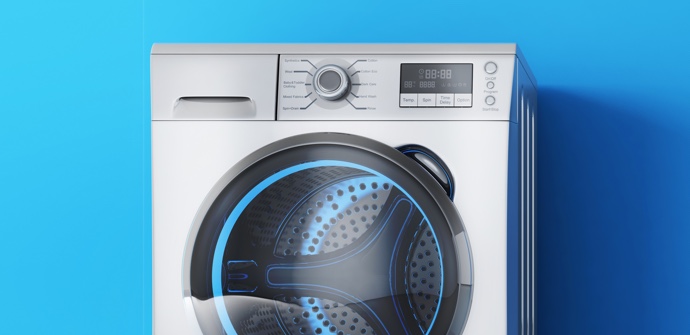ENERGY-SAVING TIPS
Energy-saving tips for your
washing machine and dryer
Washing and drying clothes can consume quite a bit of energy in your home. If you're wondering how to save money on laundry, check out these energy-saving tips for washing machines and dryers.
Washing machines

1.
Wash clothes less frequently. Hear us out: just because you wore something once doesn't necessarily mean it's dirty. If it looks and smells OK, there's no need to wash it.
2.
Choose a good time. Did you know that some times of the day are better than others for saving energy while doing laundry? Electricity can cost more during peak hours when more people use energy. Washing clothes in the morning during the summer and at night in the winter can help you avoid these higher-cost time frames.
3.
Choose an ENERGY STAR®-certified washer. It uses about 25% less energy than traditional models.
4.
Consider a front-loader. A front-loading washing machine usually uses less water than a top-loading washer.
5.
Wash on cold. According to ENERGY STAR®, 90% of a washer's energy use is from heating up water. Using cold water instead of hot or warm water should be sufficient for most laundry loads.
6.
Turn down your water heater. Set your water heater to 120 degrees instead of 140 degrees so that when you do need to wash in hot water (for oily stains or to sanitize items), it will use less energy.
7.
Wash full loads. A washer uses the same amount of mechanical energy, no matter the load size. So, washing a full load is more energy-efficient.
8.
Adjust the load level. If you do have to run a small load, adjust your washing machine settings so you use the right amount of time and water.
9.
Use high-efficiency (HE) detergent. These low-suds detergents cut down on water usage and time for front-loaders or high-efficiency top-loaders.
10.
Use detergent as indicated. Adding more laundry detergent than necessary will only result in more suds, causing your machine to use more energy and water to rinse them away.
11.
Pretreat and presoak. Pretreat stains and use the presoak option on your washing machine for heavily soiled items to avoid having to rewash them.
12.
Increase the spin speed. A faster spin at the end of a cycle extracts more water from the load, reducing drying time.
Dryers

13.
Avoid the dryer. You can significantly cut your laundry costs and electricity bill by hanging your clothes to dry outside on a clothesline (when it's warm) or inside on a drying rack.
14.
Choose an ENERGY STAR®-certified dryer. It uses about 20% less energy than traditional models.
15.
Dry full loads. Just as with washing clothes, drying a full load of clothes is much more energy efficient than only drying half a load or less.
16.
Dry towels and heavy cottons separately. When mixed with fast-drying lighter-weight items, these slow-drying items cause the whole load to take longer and use more energy.
17.
Use a lower heat setting. It may add a bit of time to the drying cycle, but you'll still use less electricity and you won't overdry your clothes.
18.
Use dryer balls. Cut drying time by using wool or rubber dryer balls. They help separate clothes and circulate the hot air, and they can also reduce static cling.
19.
Dry loads back-to-back. Switching loads while the dryer is still warm lets you take advantage of the existing heat in the dryer.
20.
Use a cool-down cycle. Doing so uses the heat that's already in the dryer to finish the job, instead of running the heat until the clothes are completely dry.
21.
Clean lint filters. Regular maintenance helps your clothes dry faster, using less energy. Remove lint after every load, and clean dryer ducts annually.
Most importantly, always check the owner's manuals for your washing machine and dryer. You'll find user guidelines as well as energy-saving tips to help you get the most efficiency out of your laundry appliances.